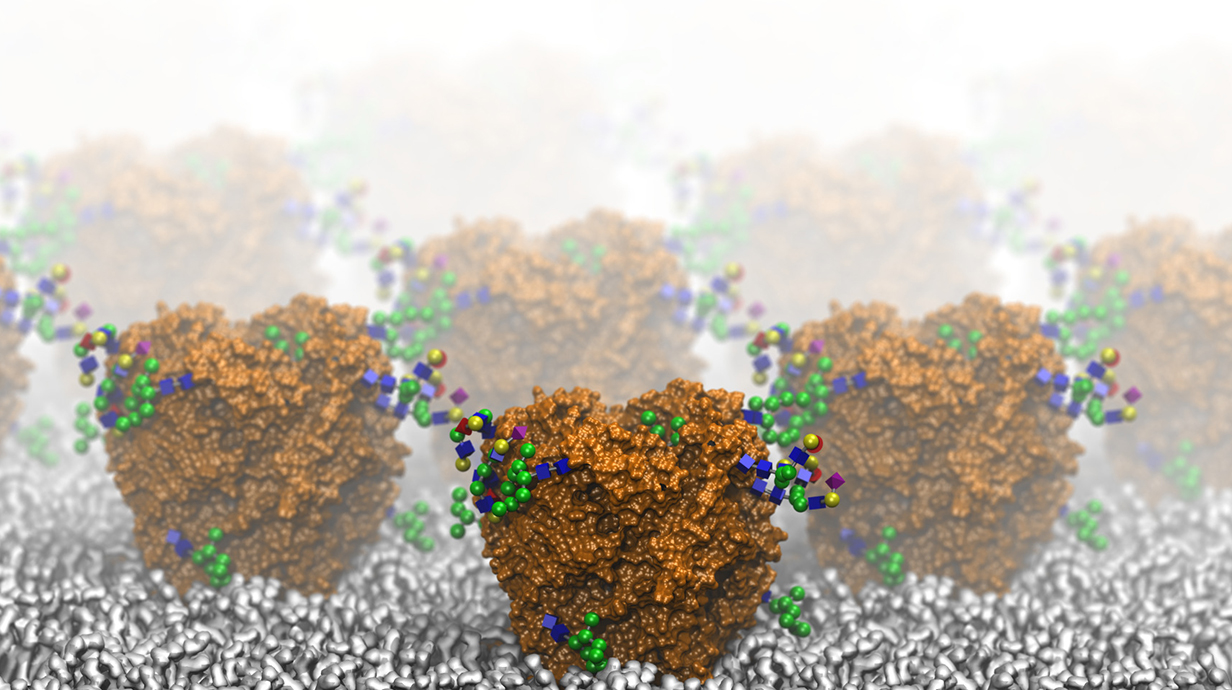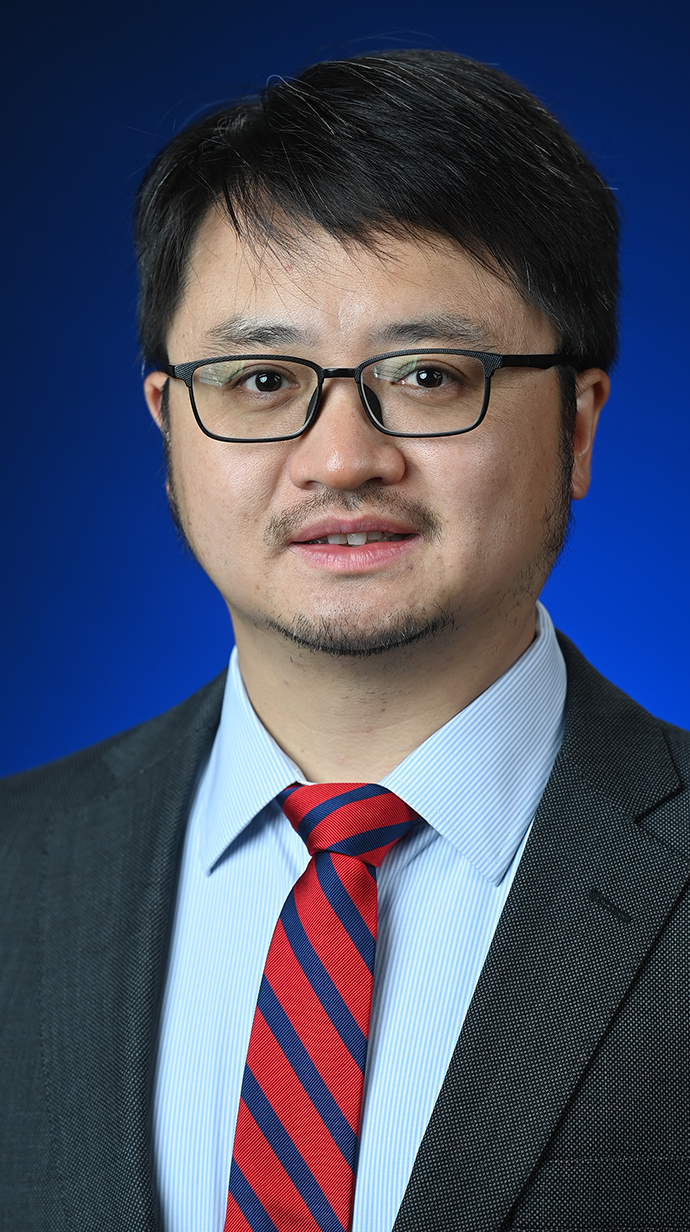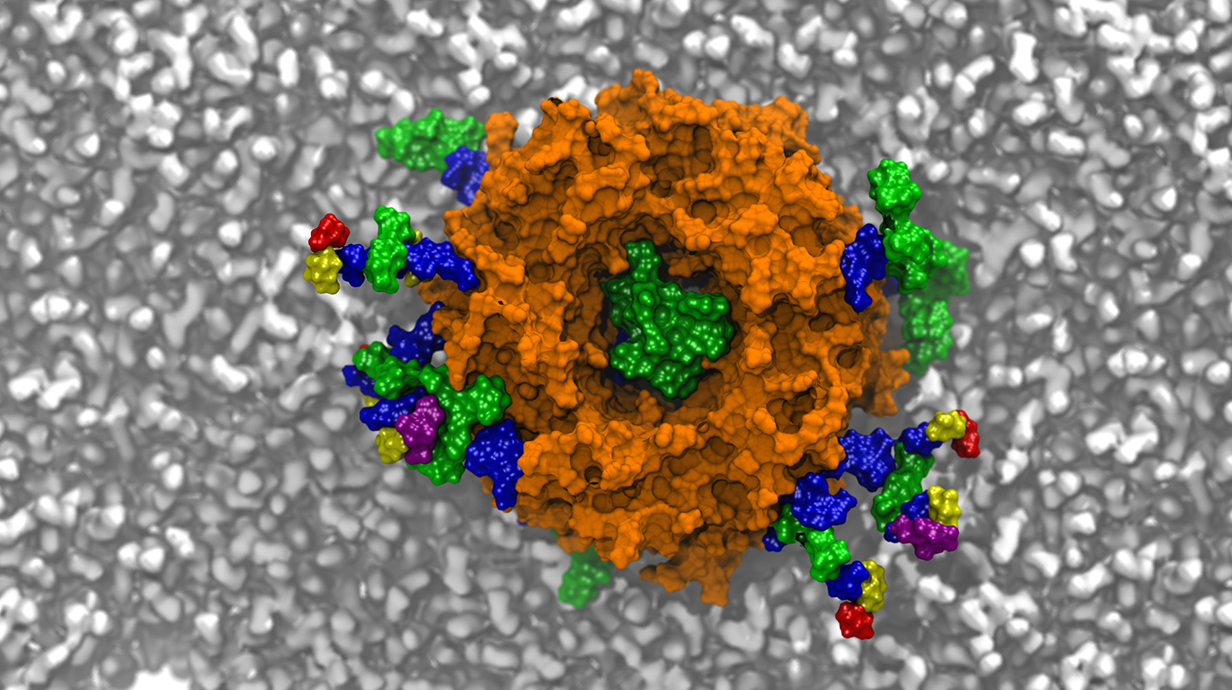Pharmacy Professor Works to Unlock Secrets of Cellular Sugar
Research explores how sugar molecules may hold key to brain and heart health

OXFORD, Miss. – A University of Mississippi pharmacy professor will study how sugar molecules on proteins could lead to new ways to detect and treat diseases using a prestigious grant from the National Science Foundation.
The NSF has awarded a Faculty Early Career Development Program grant to Jing Li, assistant professor of medical chemistry and research and assistant professor in the Research Institute of Pharmaceutical Science.
Li will use computer modeling to study the effects of sugar molecules connected to proteins. These molecules – known as glycosylation – affect ion channels that play a crucial role in brain activity, heartbeats and muscle movement.

Sugar molecules attached to proteins have been underexplored for the past two decades, Li said. By understanding the functions of sugar molecules, researchers might be able to identify indicators known as novel biomarkers to diagnose diseases at the molecular level.
“It will be used for diagnosis of diseases,” he said. “And then if we understand it very clearly, we can design and develop new treatments or drugs to treat patients.”
The ions move through the channels of a cell from one side to the other. This movement creates electrical signals that help cells talk to one other. If the ion channels do not function correctly, it can cause irregular heartbeats and epilepsy.
“If we can find why and how the sugar molecules function in these ion channels, that can help us understand the mechanism of a lot of diseases and maybe even provide therapeutic treatments in the future,” he said.
As part of the $827,000 grant, Li will also conduct educational outreach to expose and ultimately recruit students to participate in similar research.
“We really would like to recruit talented students from Mississippi to join us in this cutting-edge research,” he said. “But we realized that we did not provide undergraduate students with classes such as computational biology or computational chemistry, which are foundational for this type of research.”
The grant also includes money for educational outreach to Mississippi schools. Li plans to offer workshops for undergraduates at Ole Miss and other Mississippi colleges in the areas of biology and chemistry to help them build foundational computational skills. Those who show interest and ability may then be invited to participate in the research.

Understanding how and why sugar molecules, shown as colorful specks, interact with proteins, represented as the large orange structure, in living cells is the goal of Jing Li's work. Image by Amin Akbari Ahangar/Jing Li Lab
"If we can expose these kinds of experiences to more students and help them develop their interest and enthusiasm in this kind of research, then we can bridge that gap,” he said.
This is the first NSF CAREER award for the School of Pharmacy.
“Dr. Li is one of our most promising researchers,” said Donna Strum, UM pharmacy dean. “This prestigious recognition, the first for our school, affirms that he is conducting cutting-edge research.
"His work embodies the excellence, innovation and impact that the School of Pharmacy strives for.”
The grants support faculty early in their careers who have demonstrated potential to serve as role models in research and education as well as lead advances in the mission of their department.
This material is based on work supported by the National Science Foundation under grant no. 2439983.
Top: Sugar molecules, represented by the colorful specks, attach to brain receptor proteins, depicted as orange blobs, in a molecular-level view created using computer simulations. UM medicinal chemist Jing Li plans to use his National Science Foundation CAREER grant to research the functions of glycans on such proteins. Image by Amin Akbari Ahangar/Jing Li Lab
By
Marisa C. Atkinson
Campus
Published
May 02, 2025
